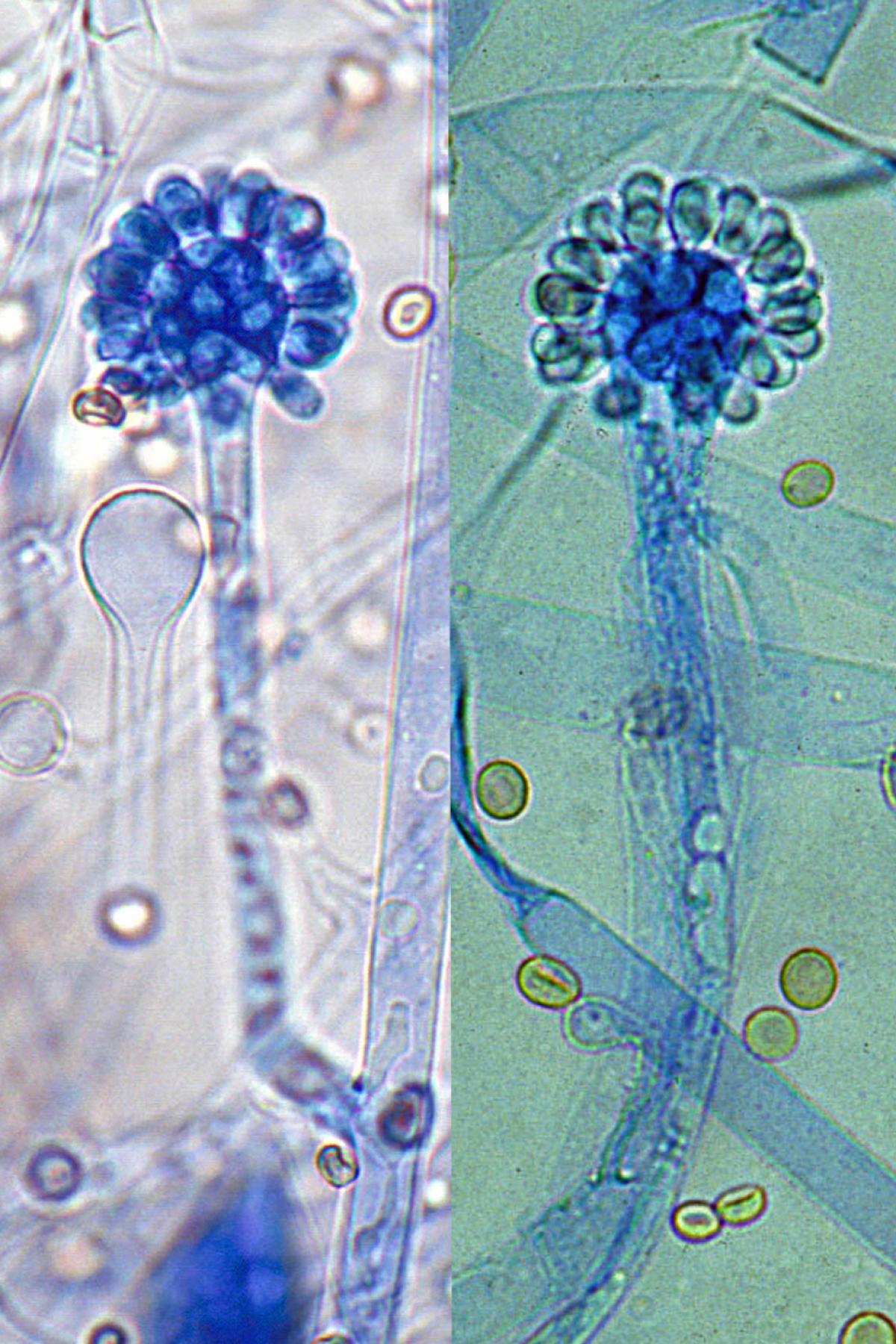Cunninghamella bertholletiae
Synonymy:
Cunninghamella elegans, Cunninghamella echinulata var. elegans.
The genus Cunninghamella is characterised by white to grey, rapidly growing colonies, producing erect, straight, branching sporangiophores.
These sporangiophores end in globose or pyriform-shaped vesicles from which several one-celled, globose to ovoid, echinulate or smooth-walled sporangiola develop on swollen denticles. Chlamydospores and zygospores may also be present.
Cunninghamella species are mainly soil fungi of the Mediterranean and subtropical zones; they are only rarely isolated in temperate regions. The genus now contains seven species with C. bertholletiae the only known species to cause disease in humans and animals, often in association with trauma and immunosuppression.

Cunninghamella bertholletiae showing simple sporangiophores forming a swollen, terminal vesicle around which single-celled, globose to ovoid sporangiola develop on swollen denticles.
RG-2 organism.
Morphological description:
Colonies are very fast growing, white at first, but becoming dark grey and powdery with sporangiola development. Sporangiophores up to 20 μm wide, straight, with verticillate or solitary branches. Vesicles subglobose to pyriform, the terminal ones up to 40 µm and the lateral ones 10-30 µm in diameter. Sporangiola are globose (7-11 µm diameter), or ellipsoidal (9-13 x 6-10 μm), verrucose or short-echinulate, hyaline singly but brownish in mass. Temperature: optimum 25-30C, maximum up to 50C.
Key features:
Mucorales, clinical isolates grow at 40C, one-celled, globose to ovoid, echinulate sporangiola borne on swollen terminal or lateral globose to clavate fertile vesicles.
Molecular identification:
ITS sequencing is recommended (Yu et al. 2015).
References:
McGinnis (1980), Weitzman and Crist (1980), Weitzman (1984), Lunn and Shipton (1983), Domsch et al. (1980), Samson (1969), de Hoog et al. (2000, 2015), Ellis (2005b), Zheng and Chen (2001).
| Antifungal | No | ≤0.016 | 0.03 | 0.06 | 0.125 | 0.25 | 0.5 | 1 | 2 | 4 | 8 | 16 | ≥32 |
|---|---|---|---|---|---|---|---|---|---|---|---|---|---|
| AMB | 42 | 1 | 1 | 5 | 21 | 12 | 2 | ||||||
| ISAV | 3 | 3 | |||||||||||
| VORI | 10 | 7 | 2 | 1 | |||||||||
| POSA | 39 | 8 | 20 | 10 | 1 | ||||||||
| ITRA | 35 | 1 | 7 | 7 | 11 | 9 |
